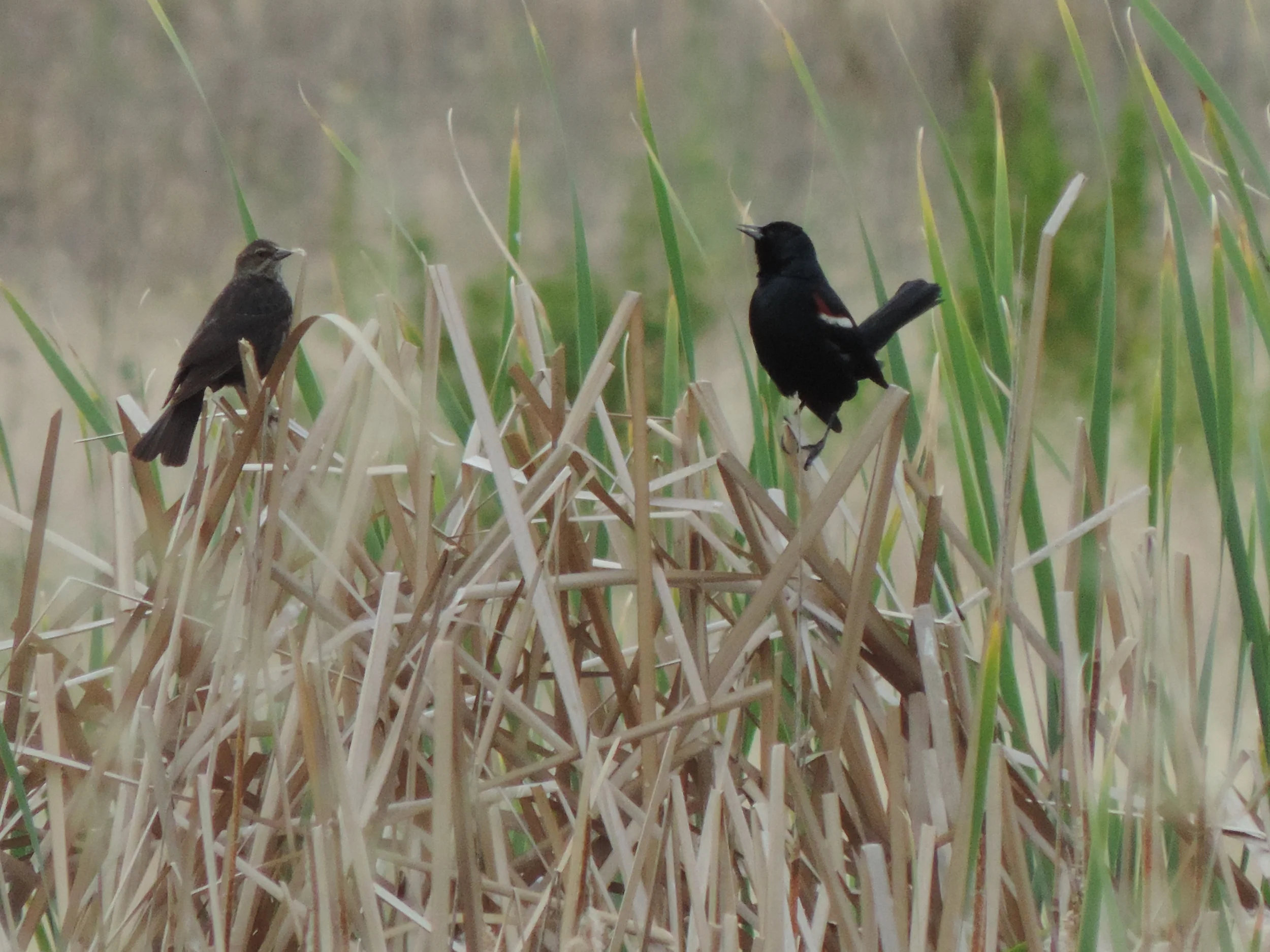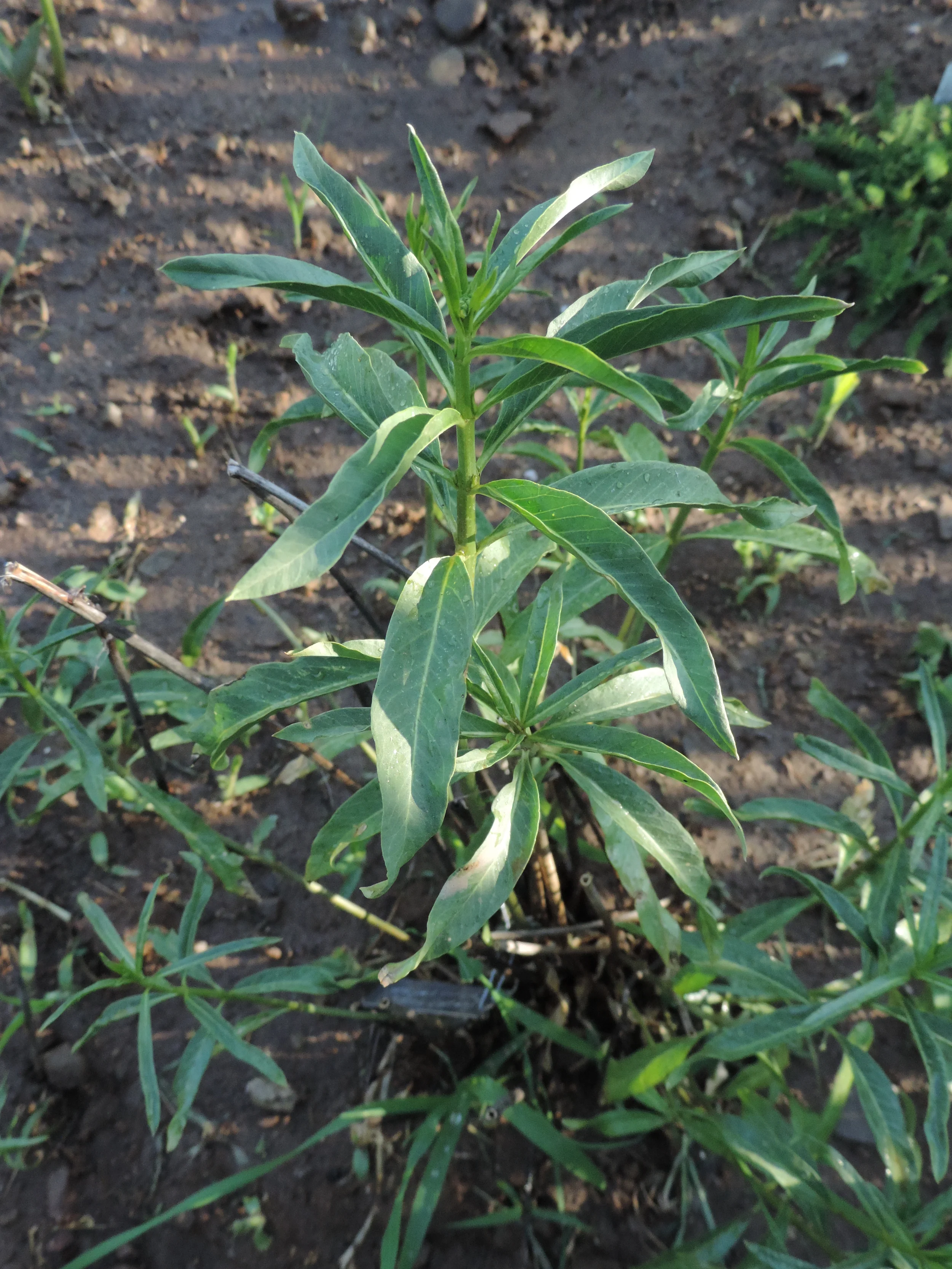Here's a sampling of the natural treasures we are working with.
Tricolored blackbird monitoring
The Tricolored Blackbird (Agelaius tricolor) is a colonial nesting passerine largely endemic to California. Colonial nesting birds are susceptible to extinction because the majority of the population exists in a few large colonies that require a large prey base and are vulnerable to disturbance. Recent statewide surveys have shown a sixty-three percent population decline between 2008 and 2014, and an eighty percent decline over the last 90 years (Meese 2014). Therefore, the Tricolored Blackbird is a conservation concern of high research priority. The California Fish and Game Commission granted a 180 day emergency “Endangered” listing for the Tricolored Blackbird in 2014, but the status was not extended past the initial period. The Tricolored Blackbird is a species of special concern, but is currently a candidate species for listing under the Endangered Species Act. They are also a covered species in the Santa Clara Valley Habitat Conservation Plan.
The majority of Tricolored Blackbird breeding colonies are found in the Central Valley. However, smaller colonies can be found scattered throughout the Central Coast Range, including Santa Clara County. Records of Tricolored Blackbirdbreeding in Santa Clara County date back to the 1800’s, but were considered to be uncommon and local breeders through the early 1900’s (Bousman 2007). Recent breeding records showa scattered distribution in Santa Clara Valley and the Diablo Range (Bousman 2007) with nesting colonies found at Calero Reservoir (2014, 1989), Lake Cunningham Park (1994), Coyote Percolation Ponds (1983, 1985), Coyote Ranch Park (1994), Del Puerto Canyon Road (2005, 2008, 2010, 2011), and Halls Valley (1982, 1983, 1987) (Tricolored Blackbird Portal 2015).
In 2014, a nesting colony of an estimated 600 Tricolored Blackbirds was discovered at Calero Reservoir. This was the only confirmed nesting colony in Santa Clara County in 2014 (T. Rahmig pers. comm.). This colony used the alfalfa fields in Coyote Valley (2-4 miles away) as foraging grounds for insects, as many flight lines (1-30 individuals) were observed moving between Coyote Valley and the breeding colony (Phillips pers. obs.).
As the only known breeding colony in Santa Clara County and due to the pressures to develop Coyote Valley, the Calero colony affords a key opportunity to better understand Tricolored Blackbird colonial nesting and foraging behavior. Tricolored Blackbirds are also a covered species under the Santa Clara Habitat Conservation Plan making them a research and conservation priority. We began monitoring Tricolored Blackbirds in Santa Clara County in 2015 and conducted an in-depth survey of the Calero Reservoir nesting colony and continue to monitor this colony. With this research we can better understand the needs and requirements of Tricolored Blackbirds in Santa Clara County to better strategize conservation and enhancement efforts for this species.
Swainson's hawk monitoring
The historic range of Swainson’s Hawk (Buteo swainsoni) in California spanned the Central and South Coast Ranges, the southern extent of the North Coast Range, most of southern California and much of the eastern side of the Sierra Nevada mountain range (Anderson et al. 2007). In 1983, the Swainson’s Hawk was listed as a Threatened species under the California Endangered Species Act following a 1979 statewide assessment by P. Bloom (Bloom 1980), which estimated 350 breeding pairs throughout the state, a 90% reduction compared to historic densities and extirpation from most of its range (Anderson et al. 2007). The listing was justified owing to the dramatic decline in population size, and the loss of breeding habitat. In California currently, Swainson’s Hawks have a restricted breeding range with three genetically distinct populations: Central Valley, Modoc Plateau and Inyo (Hull et al. 2007). The Central Valley population constitutes 95% of the breeding Swainson’s Hawks in California (Anderson et al. 2007). An inventory of California Swainson’s Hawks conducted by the California Department of Fish and Game (now Fish and Wildlife) and the University of California, Davis Wildlife Health Center from 2005-2006 yielded an estimated combined average of 2,081 breeding pairs (94% in the Central Valley), corresponding to a 600% increase in 27 years.
Oological collections confirm that the Swainson’s Hawk was a sporadic breeder in Santa Clara County in the late nineteenth century (Bousman 2007a). Henry R. Taylor, an egg collector, collected two eggs (WFVZ #98178) from a nest in ‘Ferguson’s Swamp’ on 30 April 1889, which is presumed to be a swampy area located along Llagas Creek south of Gilroy in southern Santa Clara County that was adjacent to ranch land (Bousman 2007a). The other oological record (MVZ #5227) was from a nest located near the Berryessa District or North Valley in San Jose, which is between Coyote Creek and the Diablo Mountain Range foothills, on 21 April 1894.
However, more recently it has been considered a rare transient migrant, with no nesting records since 1894 (Bousman 2007a). There have been two summer records, both a one-day occurrence, of an immature on 27 July 2002 and an adult on 9 June 1994, in Santa Clara County of Swainson’s Hawks (Bousman 2007a), with the exception of three inexplicable records of nestlings. A nestling with full natal down was found at the Summitpointe Golf Course in the hills of eastern Milpitas on 11 June 1999 and was taken to a rehabilitator. A second nestling, of near fledging age, was found in a pool house in Saratoga 1 July 2005 and a third nestling was discovered north of Tully Road in San Jose on 17 July 2005 (Rogers et al. 2005, Bousman 2007a). As a result of the unusual and unaccountable circumstances of the recovery of these three nestlings in unsuitable breeding habitat, they were not considered by the Santa Clara County bird record compiler, William Bousman, to be conclusive evidence of Swainson’s Hawks nesting in Santa Clara County (Bousman 2007a).
In 2013, William Bousman located a Swainson's Hawk nest in Coyote Valley, San Jose, which represented the first nest in Santa Clara County of the species since 1894. Talon Biologist, Ryan Phillips, along with De Anza College Wildlife Science Technician students monitored the nest 2013 through 2014. Their results were published in the Western Birds Journal. Talon is monitoring this pair in Coyote Valley and surveying areas of suitable habitat of this State Threatened species, as this species has important conservation implications.
Monarch butterfly and milkweed surveys
Monarch Butterfly, Danaus plexippus, population numbers have declined in recent years to dangerously low numbers (Xerces Society). In the 1990's, estimates were as high as a billion Monarch Butterflies in North America. Today, scientists estimate that that number has plummeted to approximately 56 million, representing a decline of greater than 80% in only less than 25 years. This steep decline is attributed to many factors and some still unknown, but the primary culprit is the loss of their larval host plant, Asclepias or commonly known milkweed, due to land clearing for development or agriculture, as well as herbicide use. Other threats include: degradation of over-wintering sites, climate change, and disease (OE parasite). Some models predict that with future change in climate with extreme weather events that over-wintering populations of monarchs will not be able to survive. Currently, Monarch Butterflies are not listed, but petitions have been submitted to the U.S. Fish and Wildlife Service for listing under the Endangered Species Act. Research suggests that this species needs serious protection and conservation efforts, so that this declining trend does not continue to occur.
Since 2015, Talon Biologists have been conducting surveys on the distribution of Asclepias throughout the Central Coast bioregion to determine its abundance. As well as to determine if it is being utilized by the Monarch Butterfly and to what extent. Most research and monitoring of the western population has focused on over-wintering sites and behaviors and little attention has been on its breeding range. Our goal with this research is to determine what areas are critical for habitat protection and for breeding monarchs.
Western Burrowing Owl Surveys
Talon Biologist have been performing Western Burrowing Owl surveys for the Santa Clara Valley Habitat Agency. The Burrowing owl is experiencing significant population declines throughout it's range (Sheffield 1997). The Burrowing Owl is also listed as a California Species of Special Concern and is a covered species under the Santa Clara Valley Habitat Conservation Plan (HCP). The Burrowing Owls is relatively small at 9" tall and can migrate through much of it's range, although it is common for individuals to stay near breeding grounds. They are active both at night and during the day, nocturnal and diurnal, and is most active during dusk and dawn. Burrowing Owls in California do not dig their owl burrows, they rely on California ground squirrels (Spermophilus beecheyi), to dig burrows used for shelter and nesting.
Locally the Burrowing Owl population has declined to less than 100 individuals and breeding grounds have been reduced to 3 small locations. Talon Biologists are conducting surveys throughout the Habitat Conservation Plan Area to locate and report Burrowing Owl locations and activity with the hopes that the data will be used to improve and protect winter and breeding habitat.
























